Mastering the Language of Horses: Unlocking The Secrets Of Equine Communication
Your horse is talking to you right now – are you listening?
Every time you walk into the barn, your horse is having a conversation with you. The way they hold their ears, the position of their head, even how they shift their weight – it’s all communication. Yet most of us miss these subtle signals, leaving our horses feeling unheard and creating unnecessary tension in our relationships.
Here’s the truth: horses are incredibly communicative animals. They’ve been perfecting their body language for thousands of years, long before humans came along with halters and saddles. While we rely on words, they speak through movement, posture, and energy. And once you start understanding their language, everything changes.
Learning to communicate with your horse isn’t just about having a prettier partnership (though that’s a nice bonus). It’s about safety, trust, and building a relationship based on mutual understanding. When you can read your horse’s signals clearly, you’ll know when they’re relaxed and ready to work, when they’re worried about something, or when they’re trying to tell you they need a break.
In this post, you’ll discover the key elements of horse communication that every horse owner should know. We’ll break down the most important body language signals, explore what your horse is really trying to tell you, and give you practical tools to become a better listener and communicator. By the end, you’ll have the confidence to “hear” what your horse is saying and respond in ways that strengthen your bond and improve your time together
How well do you understand your horse’s body language? Get a free quiz by clicking below..
The Basics: How Horses “Talk”
Horses are masters of nonverbal communication. While we humans rely heavily on words to express ourselves, horses have developed an incredibly sophisticated system of body language that allows them to communicate complex emotions, intentions, and needs without making a sound.
This makes perfect sense when you consider their history. In the wild, staying quiet often meant staying alive. A horse that whinnied at the wrong moment could alert predators to the herd’s location. Instead, they learned to communicate through subtle shifts in posture, ear position, and eye contact – signals that could be read by other horses but might go unnoticed by predators.
Your horse uses several key “channels” to communicate with you:
Ears act like satellite dishes, constantly moving to show where their attention is focused and how they’re feeling about what they’re experiencing. Eyes and facial expressions reveal their emotional state and stress levels. Body position tells you about their confidence, comfort level, and readiness to move. Tail movement indicates everything from relaxation to irritation. Horses do make sounds – though less frequently than you might expect.
What’s fascinating is that your horse is already an expert at reading your body language. They can sense your mood from across the pasture, notice when you’re nervous or confident, and respond to the slightest change in your energy. The question isn’t whether you’re communicating with your horse – you already are. The question is whether you’re having the conversation you think you’re having.
Becoming a good listener means learning to notice the subtle signals your horse is constantly sending. It means understanding that a small ear movement might be their way of saying “I’m not sure about this,” and that recognizing this early can prevent bigger problems later. Most importantly, it means realizing that your horse wants to communicate with you – they’re just waiting for you to learn their language.
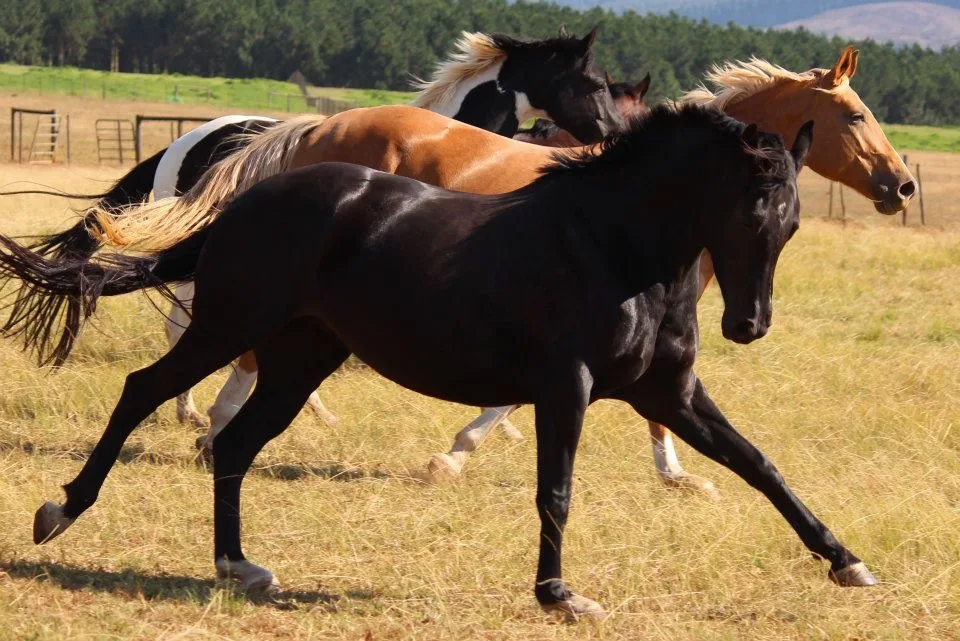
How well do you understand your horse’s body language? Get a free quiz by clicking below..
The Basics of Equine Communication
Body Language
- Understanding Horse Postures and Gestures:
- Horses are remarkably expressive through their body language, and deciphering their postures and gestures is key to comprehending their feelings and intentions. For instance, a relaxed horse may stand with a lowered head and a leg cocked, while an anxious or defensive horse might exhibit stiffness, raised head, or a tense stance. Recognizing these subtle cues enables handlers to gauge the horse’s emotional state and respond appropriately, fostering a sense of security and trust.
- Significance of Ear Positions, Tail Movements, and Stance:
- Each part of a horse’s body contributes to its communication repertoire. Ears, for instance, can swivel in different directions to indicate the focus of the horse’s attention or convey its mood. Tail movements, whether swishing or held high, also carry specific meanings, from irritation to excitement. The overall stance of a horse, including the position of its legs and neck, provides a comprehensive picture of its emotional state and readiness to interact. Delving into these details helps handlers become adept at reading the silent language that horses share.
Vocalizations
- Interpreting Whinnies, Neighs, and Snorts:
- Horses communicate audibly through a variety of sounds, each serving a distinct purpose. Whinnies are often used for long-distance communication, expressing excitement or calling out to other horses. Neighs, on the other hand, are typically associated with greetings or responses to stimuli. Snorts can convey alertness, curiosity, or even discomfort. By discerning the different tones and frequencies of these vocalizations, handlers can gain insights into the horse’s emotional state and respond accordingly.
- Recognizing the Emotional Context of Different Sounds:
- The emotional context of a horse’s vocalizations adds depth to their communication. A high-pitched whinny might indicate excitement or anticipation, while a low, rumbling nicker can express contentment or affection. Similarly, the abruptness or softness of a snort may reveal the horse’s perception of its surroundings. Attuning oneself to these nuances allows for a more nuanced understanding of the horse’s feelings, facilitating effective communication and strengthening the human-horse bond.
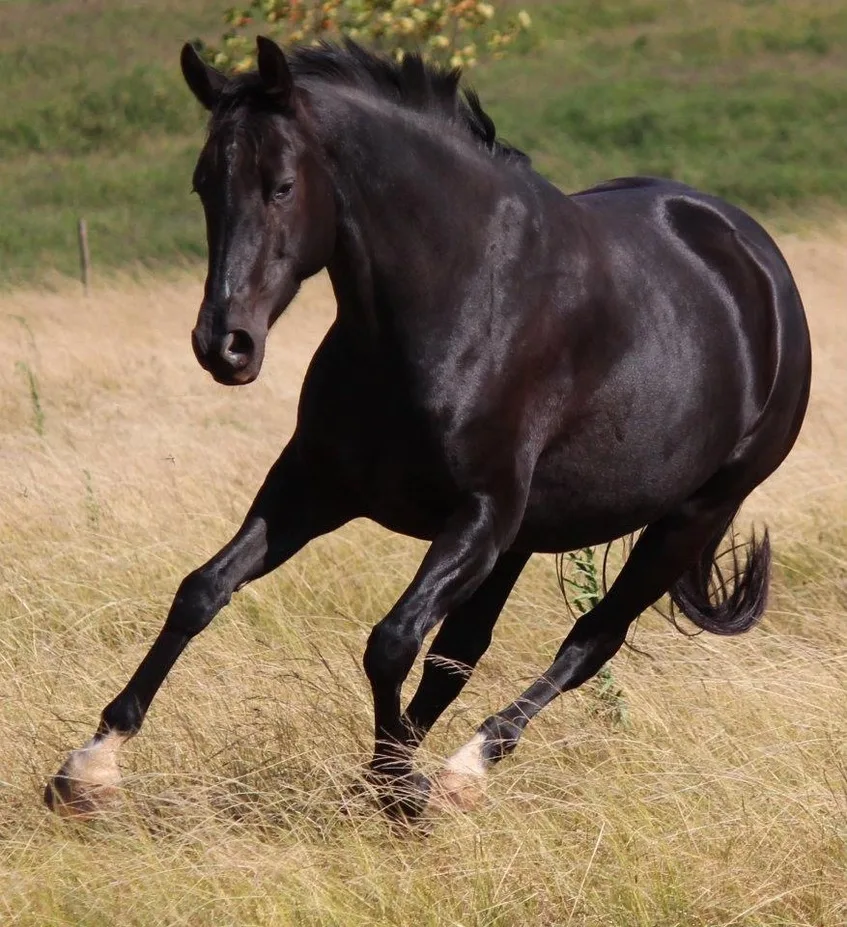
How well do you understand your horse’s body language? Get a free quiz by clicking below..
Establishing Trust Through Non-Verbal Cues
Building a Foundation of Trust Through Body Language
Trust is the cornerstone of any successful relationship, and in the human-horse dynamic, it is forged largely through non-verbal cues. Establishing a foundation of trust involves consistent, positive body language on the part of the handler. This includes maintaining a calm and confident demeanor, using gentle and deliberate movements, and respecting the horse’s personal space. By approaching and interacting with the horse in a manner that conveys safety and reassurance, handlers lay the groundwork for a relationship built on trust, where the horse feels secure and understood.
Recognizing Signs of Stress or Discomfort
Effective communication requires a keen awareness of the horse’s well-being. Horses, being prey animals, are sensitive to their environment, and stress or discomfort can manifest in their body language. Handlers must be adept at recognizing subtle cues such as tense muscles, pinned ears, swishing tails, or avoidance behaviors. Identifying these signs allows for prompt intervention, addressing the source of stress and ensuring the horse’s emotional and physical comfort. Responding to signals of discomfort reinforces the horse’s trust in the handler’s ability to understand and prioritize their needs.
Importance of Mirroring and Mutual Understanding
Mirroring involves aligning one’s body language with that of the horse, creating a sense of connection and understanding. This non-verbal synchronization fosters mutual trust and helps establish a harmonious partnership. When handlers mirror the horse’s movements, they signal empathy and openness, reinforcing the idea that communication is a two-way street. Mutual understanding is further enhanced by observing and interpreting the horse’s cues accurately. As handlers become attuned to the horse’s body language, they can respond appropriately, creating a feedback loop of trust and understanding that deepens the bond between human and horse. In essence, the importance of mirroring lies in the establishment of a shared language that transcends verbal communication, strengthening the non-verbal connection between the two beings.
Developing Your Own Body Language Awareness
- Observation and Self-awareness:
- To bridge the communication gap between humans and horses, handlers must develop a heightened awareness of their body language. This involves observing how subtle shifts in posture, facial expressions, and gestures can convey different messages. Understanding the impact of one’s non-verbal cues is the first step in ensuring effective communication with horses.
- Consistency in Communication:
- Consistency in body language is key to avoiding confusion. Horses are incredibly perceptive, and they respond well to handlers who present a consistent and clear set of non-verbal signals. Developing self-awareness enables handlers to maintain a uniform and comprehensible communication style, contributing to a more coherent and effective interaction with their equine partners.
Establishing Clear and Consistent Signals
- Clarity in Intentions:
- Clear communication involves conveying intentions with precision. Handlers must establish a set of cues that are easy for the horse to understand and consistently apply these signals. Whether through the use of reins, body positioning, or vocal commands, clarity ensures that the horse comprehends the desired action, minimizing confusion and building trust in the handler’s guidance.
- Reinforcement of Signals:
- Reinforcing signals through repetition helps solidify the association between the cue and the expected response. Consistent reinforcement provides the horse with a reliable framework for interpreting instructions, promoting a quicker and more reliable understanding of the handler’s communication. This clarity in signaling strengthens the human-horse partnership by establishing a language that both parties can rely on.
The Role of Positive Reinforcement in Equine Training
- Reward-Based Training:
- Positive reinforcement, such as treats, praise, or gentle strokes, plays a vital role in equine training. When horses associate correct responses to signals with positive outcomes, they are more likely to repeat the desired behavior. This creates a positive learning environment, fostering motivation and a willingness to engage in the communication process.
- Building Trust and Cooperation:
- Positive reinforcement not only aids in training specific behaviors but also contributes to the overall trust and cooperation between the handler and the horse. By emphasizing rewards for desired actions, handlers can create a partnership based on encouragement rather than coercion, leading to a more positive and willing attitude from the horse.
- Balancing Correction and Encouragement:
- While positive reinforcement is essential, it’s equally important to find a balance with correction when necessary. Clear communication involves guiding the horse towards the correct response and providing positive reinforcement for compliance. This balanced approach ensures effective training while maintaining a positive and respectful relationship between the human and the horse.
How well do you understand your horse’s body language? Get a free quiz by clicking below..
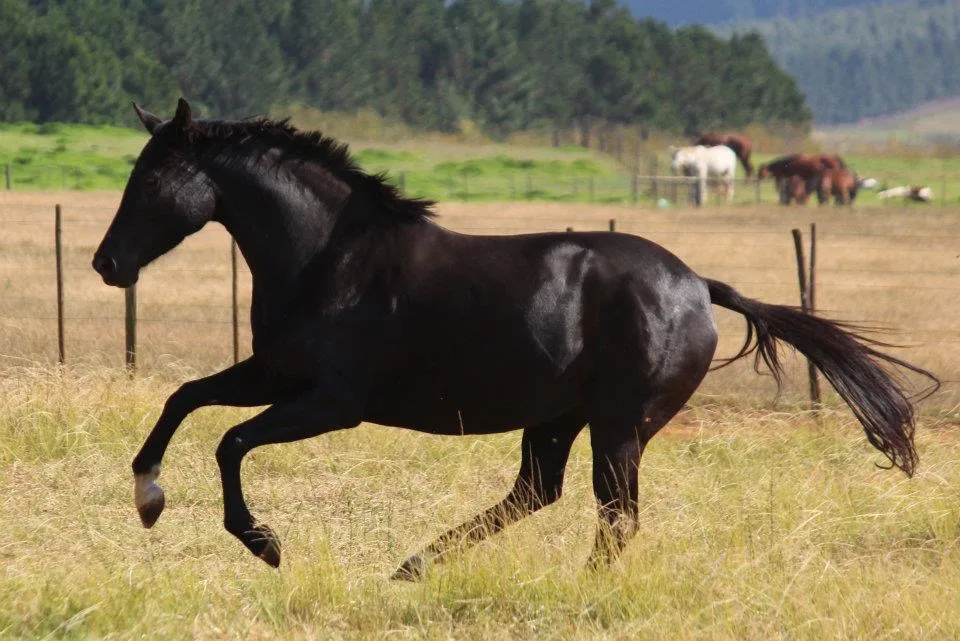
Techniques for Effective Equine Communication
Groundwork Exercises to Enhance Communication
Leading Exercises
- Focus on Connection: Leading exercises are not just about going from point A to point B. They serve as opportunities to establish a connection and reinforce the handler’s leadership. Maintain a relaxed yet confident posture, and encourage the horse to walk beside you with a loose lead.
- Transitions and Halt: Practice smooth transitions between walking and halting. This helps the horse learn to respond promptly to your cues. Use clear, consistent signals for stopping and starting, reinforcing your authority while respecting the horse’s understanding.
- Obstacle Negotiation: Introduce obstacles during leading exercises to enhance the horse’s focus and responsiveness. Negotiating simple obstacles, such as cones or poles, encourages the horse to pay attention to your cues and navigate confidently under your guidance.
Lunging Techniques
- Establishing Boundaries: Lunging is an effective way to refine communication and establish boundaries. Begin with the horse on a lunge line, and use body language and voice commands to direct movement. This reinforces your role as the leader and encourages the horse to respond to your cues from a distance.
- Direction Changes and Transitions: Practice smooth direction changes and transitions between gaits. This helps improve the horse’s responsiveness to your body language and verbal commands. Be consistent with your cues to avoid confusion, and reward compliance with positive reinforcement.
- Building Trust: Lunging also provides an opportunity to build trust. Gradually extend the lunge line and observe the horse’s reactions. By maintaining clear communication and ensuring a positive experience, you enhance the horse’s trust in your guidance.
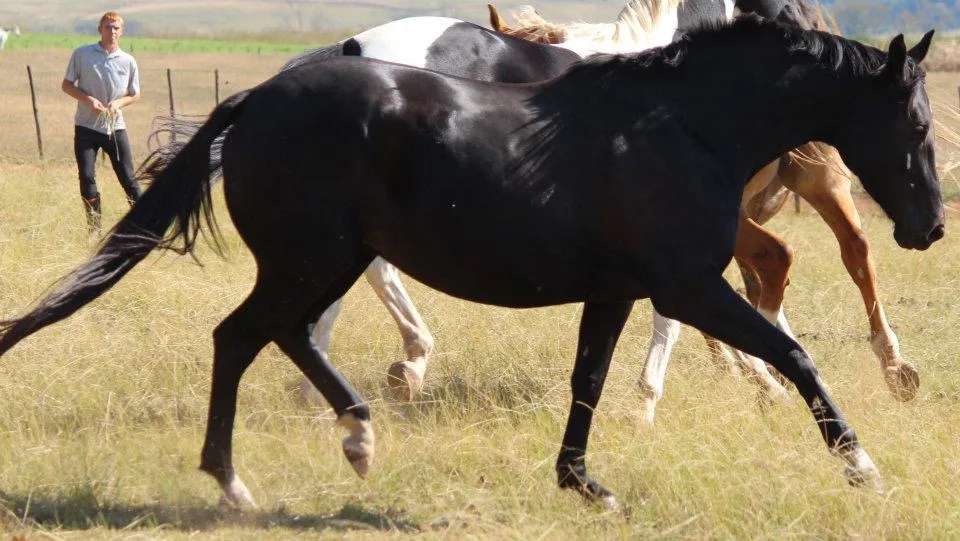
How well do you understand your horse’s body language? Get a free quiz by clicking below and test your knowledge.
Riding Communication Cues:
- Rein Aids and Their Meanings:
- Direct Rein: Applying pressure to one rein indicates a turn in the corresponding direction. Clear and gentle direct rein aids help the horse understand the desired change in direction.
- Indirect Rein: Used to guide the horse’s shoulders or hips without turning the head. Indirect rein aids are valuable for refining lateral movements and maintaining balance during turns.
- Half-Halt: A half-halt is a subtle combination of rein and seat aids that asks the horse to rebalance and prepare for a transition or change in gait. It helps maintain control and engagement.
- Leg Aids for Precision and Responsiveness:
- Leg Pressure: Applying pressure with your legs communicates forward movement. Gradual pressure cues encourage the horse to move at different speeds, while stronger pressure may signal a transition or increased impulsion.
- Leg Yield: Leg yield cues ask the horse to move laterally, crossing its legs. This exercise improves suppleness and responsiveness to leg aids.
- Engaging the Hindquarters: Using leg aids behind the girth encourages the horse to engage its hindquarters. This is crucial for impulsion, collection, and maintaining balance, especially during turns or upward transitions.
- Combined Rein and Leg Aids: Combining rein and leg aids communicates more complex maneuvers, such as bending through corners or executing lateral movements. Consistency and clarity in these cues enhance the horse’s understanding and responsiveness.
Riding communication cues involve a delicate interplay of body language, rein aids, and leg cues. Mastery of these techniques not only refines the horse’s responsiveness but also deepens the connection between rider and horse, creating a harmonious partnership based on clear and effective communication.
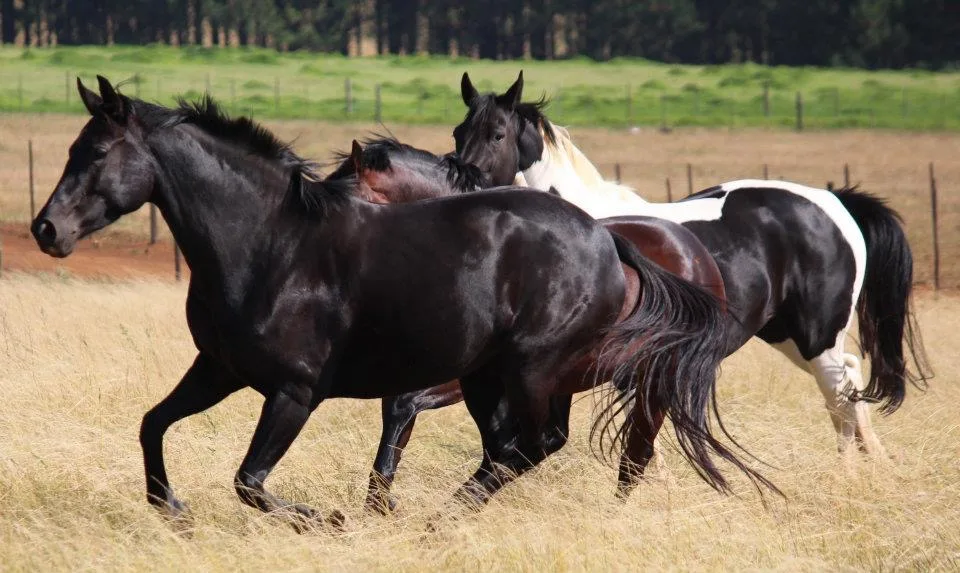
Understanding Equine Social Dynamics
The Herd Mentality and Its Implications
- Natural Instincts:
- Horses are inherently social animals with a strong inclination toward forming herds. Understanding the herd mentality is crucial for comprehending the behavior of individual horses. In a herd, horses establish hierarchies, relying on a system of communication that involves body language, vocalizations, and mutual grooming. This instinct for social interaction influences how horses perceive and respond to their environment.
- Safety and Security:
- The herd provides a sense of safety and security for horses. Recognizing this instinctual need for companionship helps handlers create environments that promote the well-being of the horse. It also influences training methodologies, emphasizing the importance of building a bond with the horse to become a trusted member of their “herd.”
Observing Group Interactions for Insights into Individual Behavior
- Hierarchy Dynamics:
- In a herd, horses establish a social hierarchy that determines their rank and influence within the group. Observing group interactions allows handlers to identify dominant and submissive individuals. Understanding the dynamics of the hierarchy helps predict how a horse may react to various situations and informs the handler’s approach in training and communication.
- Social Bonds and Alliances:
- Horses form social bonds and alliances within the herd, displaying preferences for certain companions. Observing these relationships provides insights into individual personalities and helps handlers tailor their communication to each horse’s unique characteristics. Recognizing social bonds also aids in managing horses in group settings, promoting a harmonious environment.
How Understanding Social Structure Enhances Communication
- Respecting Hierarchy in Training:
- Acknowledging the horse’s natural inclination for hierarchy informs training methods. Handlers can adopt leadership roles, earning the horse’s trust and respect through clear communication. Respecting the horse’s need for a leader enhances cooperation and responsiveness, fostering a stronger bond.
- Utilizing Group Dynamics in Handling:
- Applying knowledge of herd dynamics to handling allows for the effective management of multiple horses. Understanding which horses get along and recognizing potential conflicts aids in organizing living arrangements, turnout schedules, and group activities. This awareness contributes to a positive social environment and reduces stress.
- Building Trust Through Understanding:
- Recognizing the importance of social bonds and individual relationships within a group enables handlers to build trust more effectively. By acknowledging the horse’s social nature and incorporating elements of their natural behavior into training and interaction, handlers can establish a rapport based on understanding and mutual respect.
Understanding equine social dynamics is fundamental to developing a strong bond between humans and horses. It goes beyond recognizing herd mentality to appreciating the nuances of individual relationships and the impact of social structure on behavior. This understanding enhances communication by allowing handlers to navigate and respond to the horse’s social instincts, fostering a relationship built on trust and cooperation.
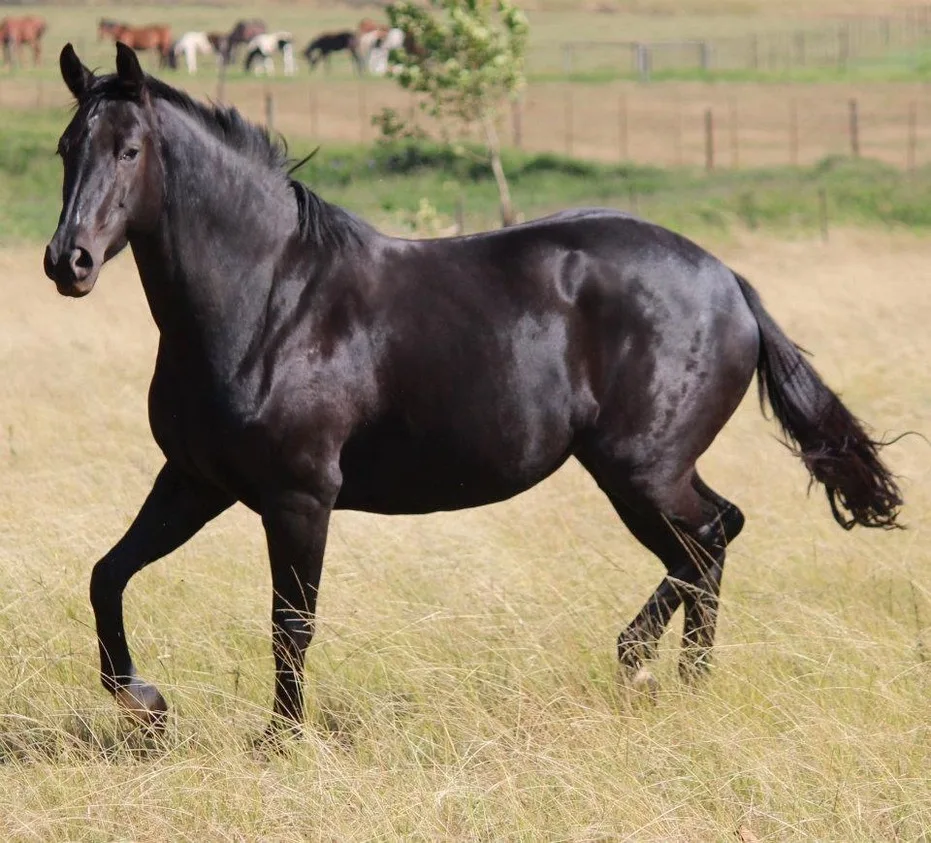
How well do you understand your horse’s body language? Get a free quiz by clicking below..
Overcoming Communication Challenges
Dealing with Fear or Anxiety in Horses
- Identifying Triggers:
- Addressing fear or anxiety in horses begins with identifying specific triggers that induce stress. Whether it’s a particular environment, object, or activity, understanding what causes fear allows handlers to take proactive measures to reduce this stress.
- Gradual Desensitization:
- Once triggers are identified, a gradual desensitization process can be implemented. This involves exposing the horse to the feared stimuli in a controlled and incremental manner. Patience and positive reinforcement are key components of this process, allowing the horse to build confidence and trust over time.
- Building a Safe Environment:
- Creating a safe and secure environment is crucial for reducing anxiety. Consistent routines, a familiar living space, and positive associations with activities can contribute to a sense of security for the horse. Handlers should aim to establish themselves as a reliable and comforting presence.
Addressing Behavioral Issues Through Communication
- Understanding the Root Cause:
- Behavioral issues often stem from underlying discomfort, pain, or confusion. Effective communication involves identifying the root cause of undesirable behavior. Observing the horse’s body language and considering environmental factors helps pinpoint the source of the problem.
- Clear and Consistent Cues:
- Clear communication cues play a crucial role in addressing behavioral issues. Handlers should ensure that signals are consistent, well-timed, and easily understandable. Ambiguity in cues can lead to confusion and exacerbate behavioral challenges.
- Positive Reinforcement for Desired Behavior:
- Reinforcing positive behavior with rewards is an effective way to reshape the horse’s responses. This creates an association between the desired behavior and a positive outcome, encouraging the horse to repeat the behavior in the future.
Seeking Professional Help When Needed
- Recognizing Limits of Expertise:
- When faced with complex behavioral issues or challenges beyond one’s expertise, it is crucial to recognize the limits of personal knowledge. Certain problems may require specialized training or intervention.
- Consulting with Equine Professionals:
- Seeking the assistance of equine behaviorists, trainers, or veterinarians can provide valuable insights and solutions. These professionals have the expertise to assess and address specific challenges, offering tailored advice and training programs to improve communication and resolve issues.
- Collaborative Approaches:
- Collaboration between the handler and equine professionals can be highly beneficial. Professionals can share their expertise while involving the handler in the process, educating them on effective communication strategies and behavioral modification techniques.
Overcoming communication challenges with horses involves a combination of empathy, clear communication, and a commitment to addressing the root causes of issues. Handlers should be proactive in creating a positive and supportive environment while seeking professional help when necessary, ensuring the well-being of the horse and fostering a healthy human-horse relationship.
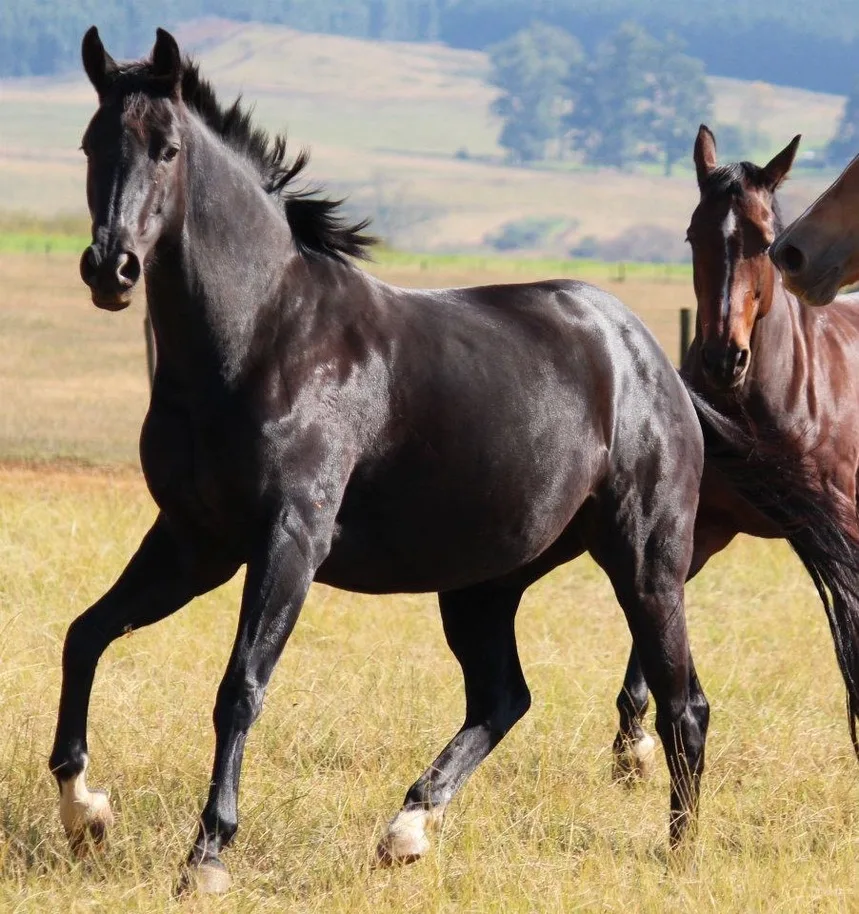
How well do you understand your horse’s body language? Get a free quiz by clicking below..
Conclusion
Recap of Key Points in Mastering the Language of Horses
- Non-Verbal Communication Importance:
- Effective communication with horses relies heavily on non-verbal cues, encompassing body language, vocalizations, and social dynamics. Recognizing and interpreting these signals is fundamental to building a strong human-horse bond.
- Understanding Herd Mentality:
- Acknowledging the herd mentality and its implications is vital. Horses thrive on social connections, and an understanding of their natural behaviors within a group context enhances communication and fosters trust.
- Clear and Consistent Communication:
- Clear and consistent communication cues, whether on the ground or in the saddle, create a language of understanding between humans and horses. The importance of establishing trust through reliable and precise signals cannot be overstated.
Encouragement for Ongoing Learning and Communication Refinement
- Embracing a Lifelong Learning Journey:
- Mastery of equine communication is an ongoing process. Encourage handlers to embrace a lifelong learning journey, staying curious and open to new insights. Each horse is unique, and refining communication skills involves adapting to individual personalities and needs.
- Continued Observation and Adaptation:
- Encourage handlers to continue observing horses in various situations, whether during training, turnout, or social interactions. This ongoing observation allows for adaptation and refinement of communication techniques based on the horse’s responses and evolving circumstances.
Strengthening the Human-Horse Bond Through Effective Communication Techniques
- Building Trust Through Understanding:
- The foundation of a strong bond between humans and horses is built on trust. Effective communication is the bridge to understanding, and handlers should prioritize building a relationship based on empathy, consistency, and positive reinforcement.
- Mutual Growth and Partnership:
- Effective communication is not just about giving commands; it’s about fostering a partnership where both parties grow and learn together. Handlers should view equine communication as a collaborative effort, recognizing the unique contributions and perspectives of both human and horse.
- Celebrating Achievements and Milestones:
- As handlers refine their communication skills and witness positive changes in horse behavior, it’s essential to celebrate achievements and milestones. Acknowledging the victories, no matter how small, reinforces the positive aspects of the human-horse relationship.
In conclusion, mastering the language of horses is a dynamic and rewarding journey that involves continual learning, adaptation, and the celebration of successes. By understanding the nuances of equine communication, handlers can forge deep connections, build trust, and create a partnership that transcends words. Encourage an ongoing commitment to effective communication as a means to strengthen the human-horse bond and enrich the lives of both parties involved.
Understanding what your horse’s natural instinct is and how they will naturally react to certain situations will help you to know how to act around them and how to know why they react in different situations.
When being around horses for many years you learn to read their body language and what your horse is telling you by watching and.
Reading your horse’s body language is a very important part of horse ownership, and by doing so, you’ll be able to provide better care and build a stronger bond with your equine partner. Remember to observe your horse’s ears, eyes, mouth, and tail, as well as their body posture, breathing patterns, and vocalizations. With practice and patience, you’ll become proficient at interpreting your horse’s thoughts and emotions, making you a more effective horse handler and caretaker.
I often give my horses ‘voices’ and when describing their actions talk for them when describing what they did to fellow horse lovers. This is because they are talking to me with their body language and subtle movements – I do know what they are ‘saying’ having spent so many years around them.
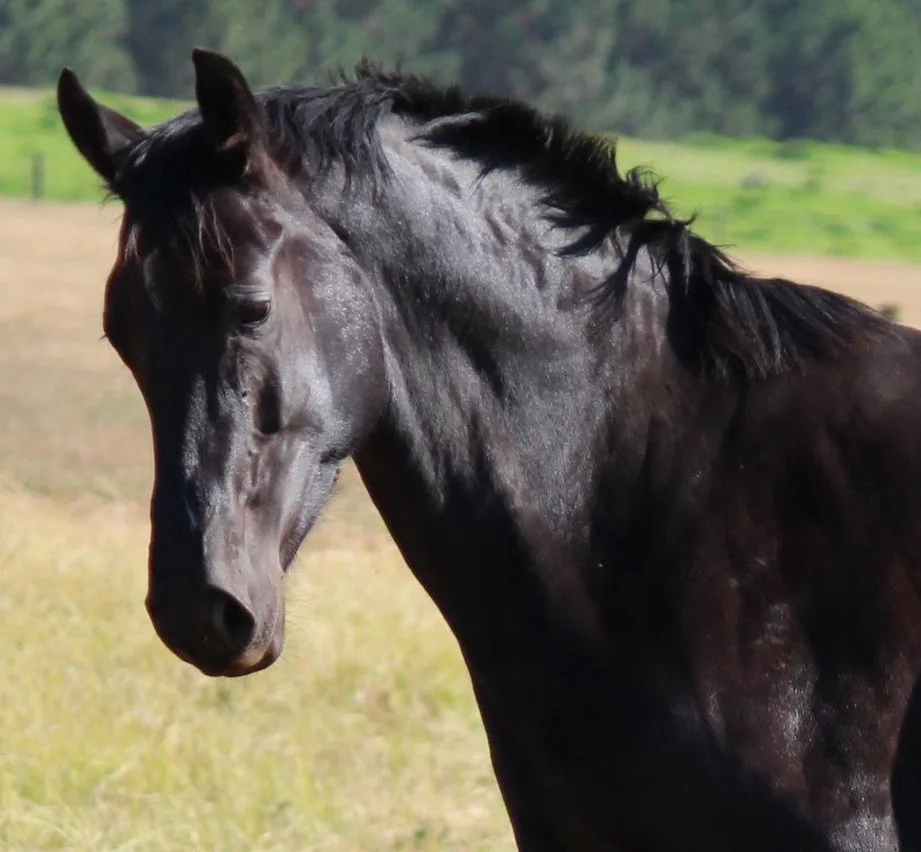
Further Reading
Books:
- “Horse Behaviour: Interpreting Body Language and Communication” by Dr. Barbara Schöning – Written by a specialist veterinarian in animal behavior, this book draws on recent research in equine ethology and applies it to practical knowledge for improving horse-human relationships Amazon UK
- “The Body Language of Horses” by Tom Ainslee and Bonnie Ledbetter – A comprehensive guide that teaches readers to recognize different emotional states in horses, from happy and relaxed to frightened and frustrated The Body Language of Horses: Revealing the Nature of Equine Needs, Wishes and Emotions and How Horses Communicate Them – For Owners, Breeders, … All Other Horse Lovers Including Handicappers: Tom Ainslee, Bonnie Ledbetter: 9780688036201: Amazon.com: Books
- “Essential Horse Speak: Continuing the Conversation” by Sharon Wilsie – An international bestseller translated into seven languages that provides a complete system for understanding horse communication, including groundwork and riding applications Essential Horse Speak: Continuing the Conversation – Trafalgar Square Books
Online Learning Resources
Professional Development Courses:
- Equine Institute – Offers science-based online courses developed by equine veterinarians and physiotherapists, including behavior and communication modules for all expertise levels Equine Education | Science-Based Horse Courses Online
- The British Horse Society Online CPD Courses – Features courses on horse behavior and communication that help improve relationships and provide confidence in handling and training decisions Online CPD Courses | The British Horse Society
- University of Florida’s “The Horse Course” (Coursera) – A comprehensive introduction covering equine senses, communication, behavior, and psychology used in training The Horse Course: Introduction to Basic Care and Management | Coursera
Specialized Communication Training:
- “Connect With Your Horse” Animal Communication Course – A 6-week program that teaches the foundations of animal communication and helps develop personal skills for connecting with horses Connect With Your Horse – Animal Communication course
Free Resources
- The NAC’s “Equine Body Language” free e-book – Covers communication methods, body language, vocalizations, equine senses, and behavioral patterns Equine Body Language – The NAC
- Listen To Your Horse blog – Provides real-time tutorials on horse energy and body language, emphasizing the importance of watching horses communicate with each other Horse Herd Communication – Energy & Body Language – Listen To Your Horse
Professional Organizations
- PATH International – Provides certifications and training for equine-assisted services professionals, including therapeutic horsemanship that relies heavily on understanding horse communication Therapeutic Horsemanship | Professional Certifications | PATH Intl
Scientific Research
For readers interested in the research behind horse communication:
- ScienceDirect publication on “Body language: Its importance for communication with horses” – Discusses the science of intention movements, how horses read human body language, and the importance of this communication in training and safety Body language: Its importance for communication with horses – ScienceDirect
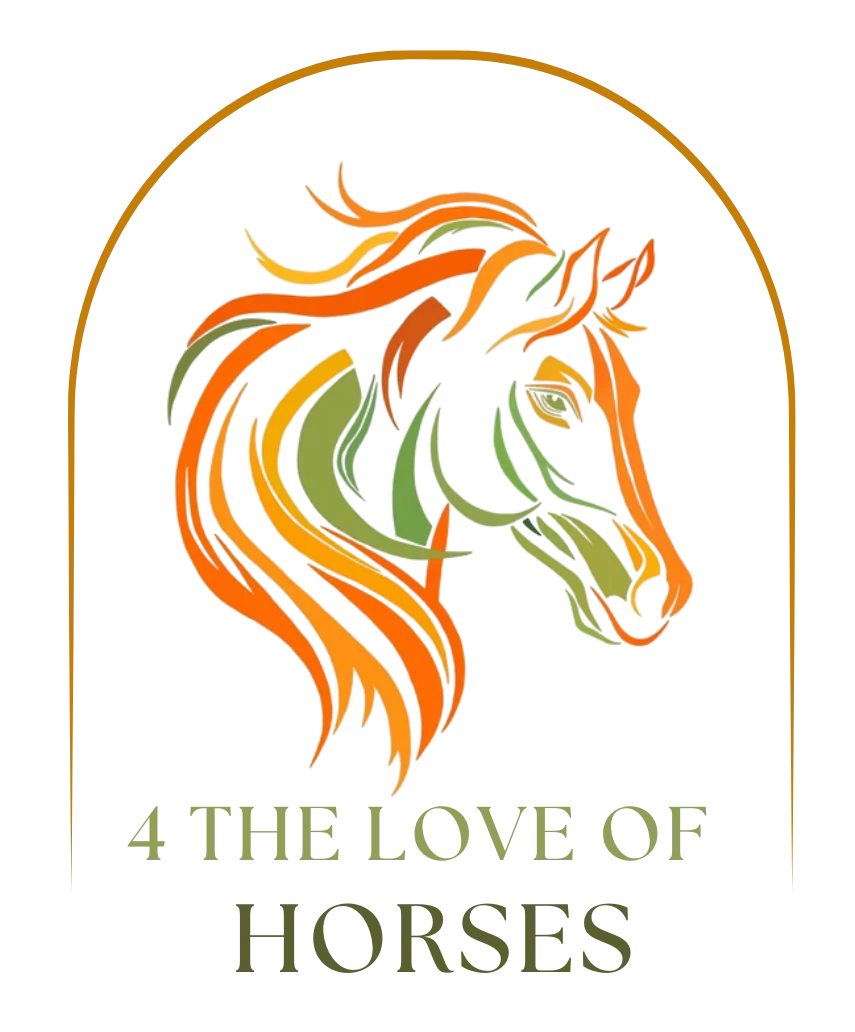

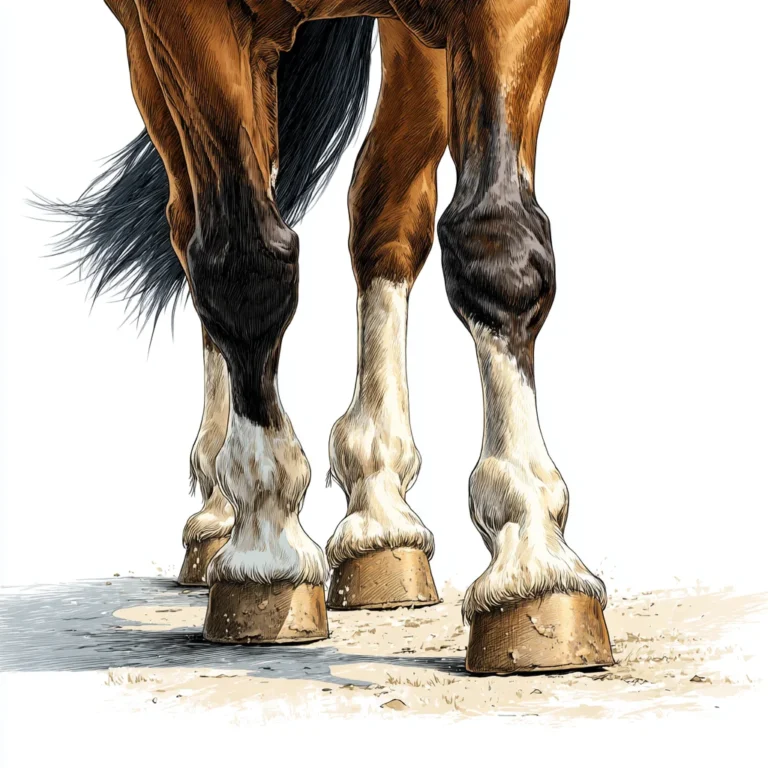
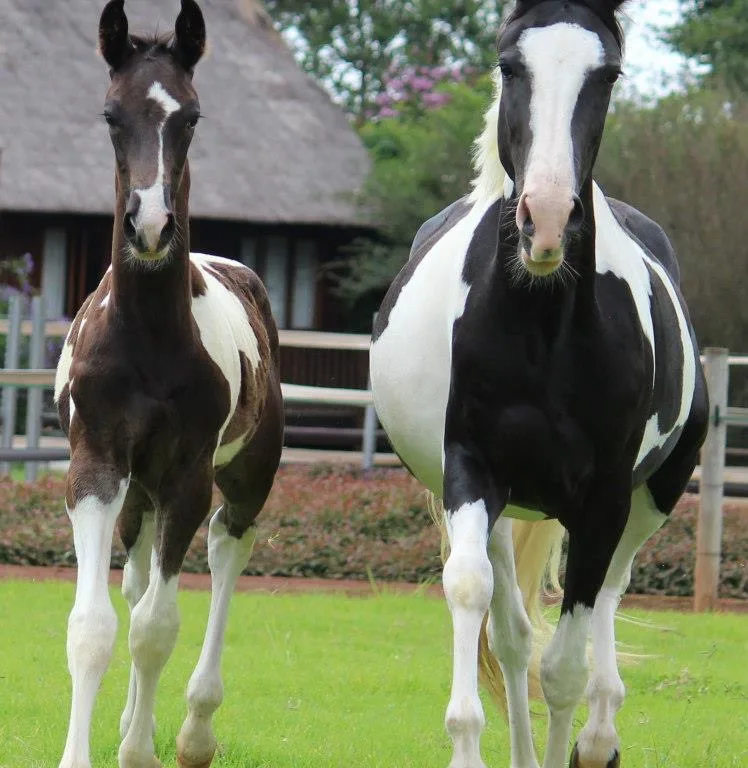
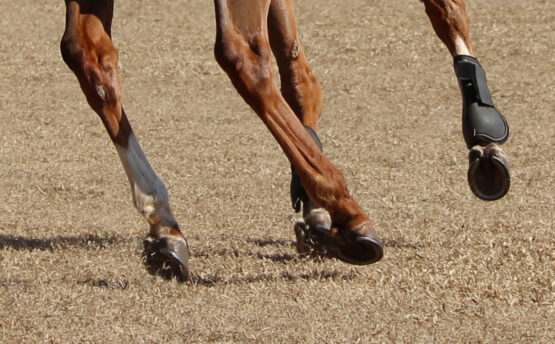
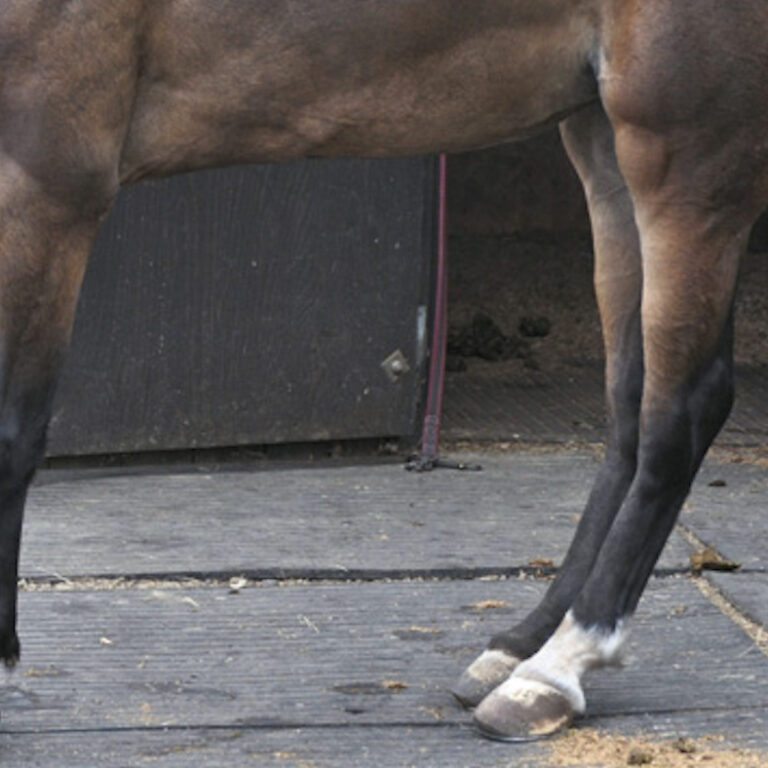
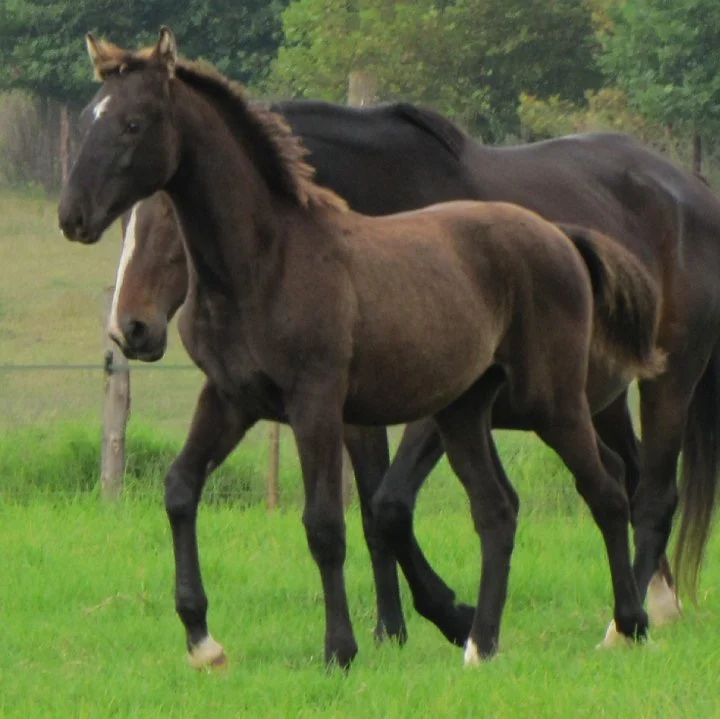
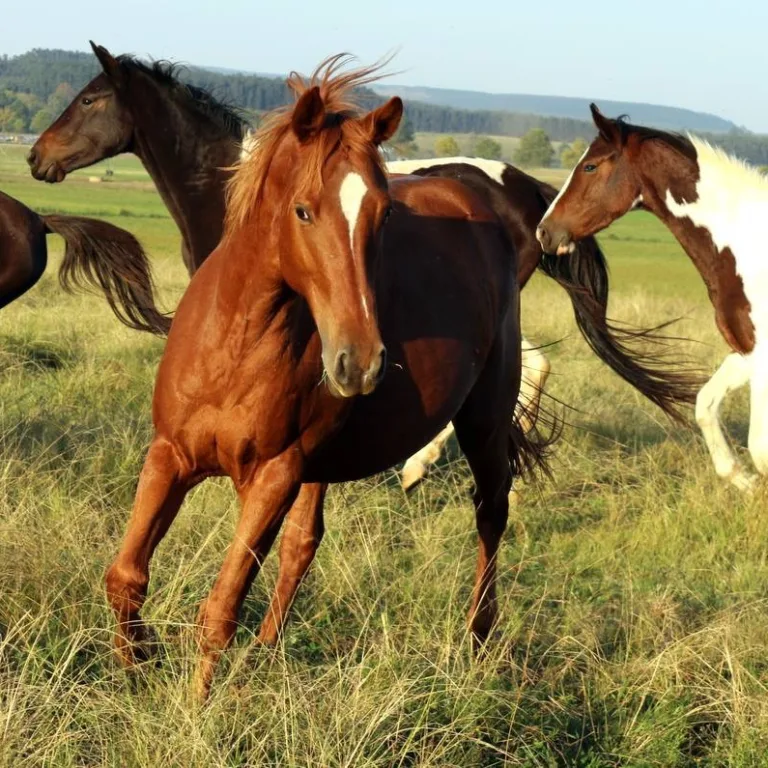
Leave a Reply